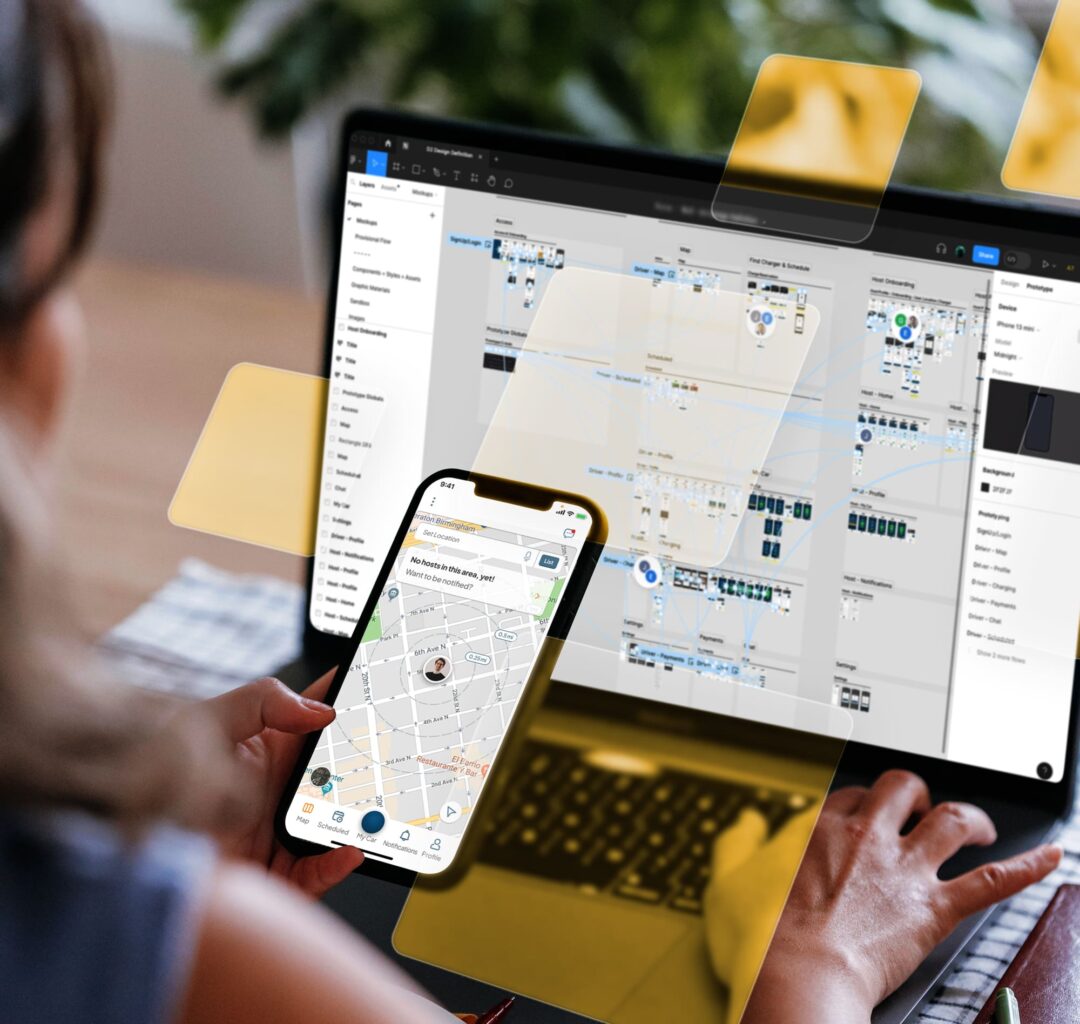At Founders Workshop, we’ve built over 150 software apps, and one thing we’ve learned is that building a prototype is instrumental in the success of a product launch. But before delving into the significance of prototyping in software application development, let’s first understand what a prototype is.
In the context of software development, a prototype is a preliminary version of an application that allows designers, developers, and stakeholders to visualize and interact with key features and functionalities. It serves as a tangible representation of the final product, providing valuable insights into the design, user experience, and overall feasibility of the application.
How does a prototype help and how can it be used?
1. Early Feedback, Validation and Pre-Sales
Prototyping plays a vital role in gathering early feedback from various stakeholders, users, and potential customers. By creating a prototype, you can visually demonstrate the core concepts and functionalities of the application. This hands-on experience enables stakeholders to provide valuable insights and validate the direction of the project. Early feedback allows you to make informed decisions, iterate on ideas, and identify potential issues before committing significant resources to full-scale development. A prototype can also be used to sell to your first customers, which is the ultimate signal in validating your product idea and showing traction with investors.
2. Cost-effectiveness and Risk Mitigation:
One of the major advantages of prototyping is its cost-effectiveness. During the prototype phase, you can identify design flaws, usability challenges, and technical limitations. Addressing these issues early on minimizes the risk of costly rework and delays in the later stages of development. By investing in a prototype, you create an opportunity to detect and rectify potential roadblocks, ultimately saving time and money in the long run.
3. Enhanced User Experience (UX):
Incorporating FIGMA into your prototyping workflow enables you to focus on the user interface (UI) design and interactions, offering a tangible experience for users to navigate through the application. By testing the usability of the prototype with real users, you can identify areas that require improvement. This iterative process leads to a more intuitive and user-friendly final product, ensuring that users have a positive experience while engaging with the application.
4. Clear Communication and Collaborative Vision:
Utilizing FIGMA’s collaborative features, designers can present the prototype to team members, stakeholders, and developers in a visually engaging manner. The interactive nature of the prototype facilitates clear communication and a shared understanding among all parties involved. This promotes effective collaboration, allowing stakeholders to provide feedback, discuss ideas, and align their vision with the project’s goals. With FIGMA, the prototype becomes a powerful tool that bridges the gap between various team members, fostering a collaborative and cohesive approach to software development.
5. Using Prototypes to Raise Funds from Investors:
A well-crafted prototype holds immense value when seeking investment from potential investors. It serves as a tangible demonstration of the application’s potential, showcasing its key functionalities and user experience. Presenting investors with a clickable prototype allows them to interact with the application in a near-realistic manner, helping them better understand its value proposition and market fit. This tangible representation increases investor confidence, as they can visualize the product’s potential and align their investment decision with the project’s viability and market prospects.
In conclusion, building a prototype before embarking on full-scale development is a critical step in software application development. It enables you to obtain early feedback, validate ideas, mitigate risks, enhance the user experience, foster clear communication, and optimize the development process. On the other hand, skipping the prototype phase can lead to misaligned project vision, increased development costs, reduced investor confidence, and uncertainties about market fit. Prioritizing prototyping sets the foundation for a successful and user-centric software application.
What is a good prototyping tool?
We use a cloud-based design and prototyping platform called FIGMA to transform static designs into dynamic and clickable prototypes. The platform supports real-time collaboration, enabling team members to work simultaneously on the same project, comment on designs, and provide feedback. With FIGMA’s advanced prototyping capabilities, designers can define interactive elements, transitions, and animations, providing stakeholders and users with a near-realistic experience of the final application.
When should you build a prototype?
The majority of our prototyping should take place once you have a clear idea of the application’s purpose, target audience, and core features.
At Founders Workshop, we identify these requirements during a very thorough Discovery (D1) process, an instrumental part of our overall 5D Process. After Discovery, our Definition (D2) process is where most of our prototyping takes place.
Are you ready to see your idea become a reality? Set up a client discovery call with Vincent and Mike using this link.



